
1912 Oakland Giants — In uniform– Top Row: Left to right: bench sitting: (1) Chet Bost, (2) Maisona, (3) H.Smith, (4)unknown, (5) Nelson Watson; Manager, (6)Durgan, (7) Richardson, (8) White, (9) Norman O. Houston — Bottom: Left to right: ground sitting: (10) Herb Clarke, (11) Hilary “Bullet” Meaddows (UCLA, Library Special Collections, Charles E. Young Research Library)
This photograph was located deep in the archives of the Golden State Mutual Life Insurance collection. It was an odd place to find a flawless image of the 1912 Oakland Giants. Access to such images, that are over 100 years old, of African American baseball teams, are very rare — and they are usually in very poor condition. Upon closer inspection, Norman O. Houston can been seen sitting to the far right in the top row.

Norman O. Houston
This Dead Ball era photo is one of a few that shows the Oakland Giants in their home uniforms, taken at the State League Park, which was once located at Grove Street and Fifty-Seventh Street, behind Idora Park. Today, it is where Children’s Hospital Oakland Research Institute sits, behind Dover Park, in the Bushrod neighborhood of North Oakland.
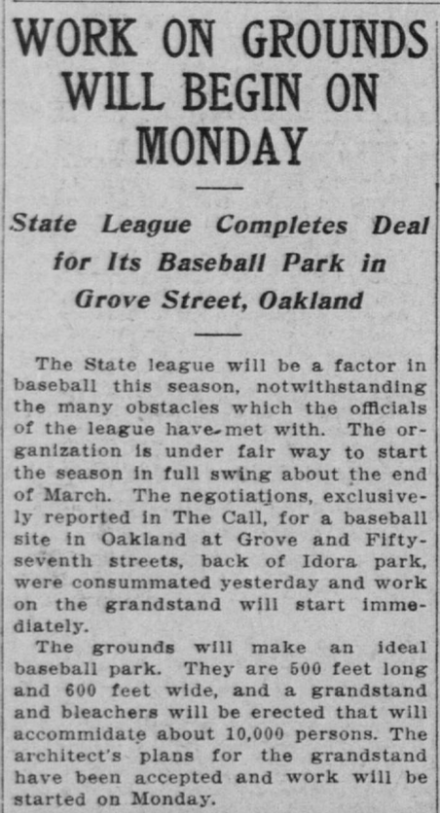
San Francisco Call – February 27, 1909

Idora Park – Oakland Public Library, 1910

The Freeeman – May, 25, 1912
From his humble beginnings, Houston was destined for greatness. Houston was born in San Jose, California to Oliver and Lillian Houston, and lived part of his childhood in the Lower Bottoms of West Oakland. The larger part of his youth was spent in the Brooklyn Township of Alameda county, which is now considered Oakland. His father, Oliver, was a Pullman Porter, and also worked as a waiter at the Hotel Vendome. The story goes, in Houston’s own words, that he was the “godson” of the Sparkling wine baron and “Champagne King of California”, Paul Masson, based on Masson’s relationship with Houston’s father.

Map of Oakland and Brooklyn – 1885
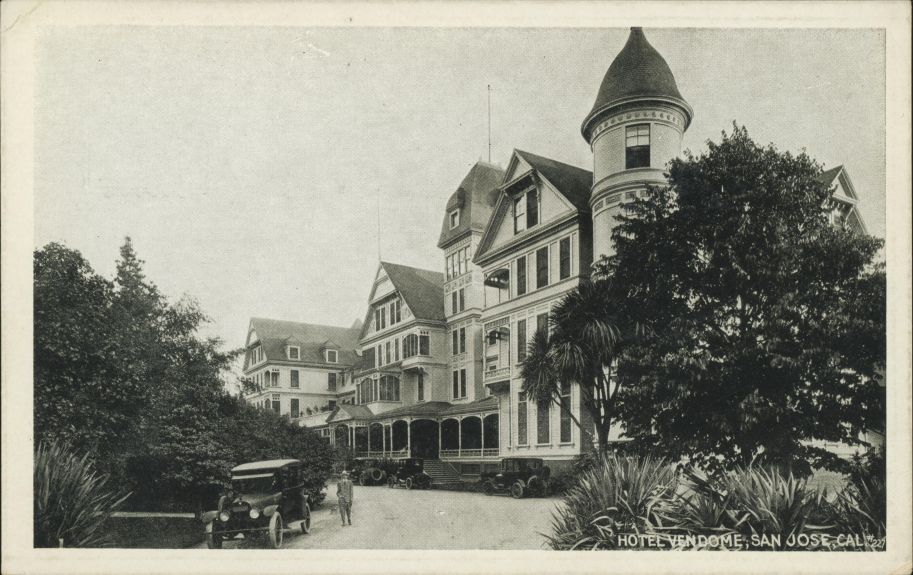
Hotel Vendome – San Jose
After graduating from Oakland Technical High School, Huston went on to study Business Administration U.C. Berkeley. While attending U.C. Berkeley, Houston became one of the key outfielders for a string of African American baseball teams that left a Bay Area legacy, which led up to the founding of the West Coast Baseball Association. At the turn of the 20th Century, the Oakland Giants were not the first African American baseball team to step foot on the diamonds of the East Bay, West Bay, and Central Valley; but historically, they were the most recognizable local African American team, and most widely accepted, that paved the way for other African American teams to follow.
Under the management of Nelson Watson, who gathered the best players in the East Bay, the Oakland Giants became a formidable team, that traveled throughout Northern California, with games scheduled through Spalding.

Mill Valley Record – October 4, 1912

Marin Journal – October 10, 1912
At the age of 19, playing for the Oakland Giants, Huston faced Walter “Dutch” Ruether in the batter’s box. “Dutch” was one month older than Houston, and born in Alameda, California, but spent his life in the West Bay. Ruether went on to play ten years of professional baseball, in both the National and American leagues. It was not uncommon, at that time, for an African American baseball team to play the foil to their opponents; the team to beat above all other teams, during the early part of the 20th Century. These type of race based contest created the largest gates, and were advertised accordingly. More often than not, winning or losing a game decided one’s fate, when it came to the return trip home — as well as an extended invitation to return to play another day.
As the Oakland Giants morphed into the Lynne-Stanley Giants, under the leadership of Chet Bost, winning became a way of staying in the public eye. Huston played outfield for Bost and Lynne Stanley from 1913 to 1914. The year 1915 remains a mystery, and the disappearance of the Lynne-Stanley Giants for one year ushered in their 1916 return as the Oak Leaf Club of Oakland, where Houston was once again seen playing the outfield with a large majority of the former Oakland Giants team.

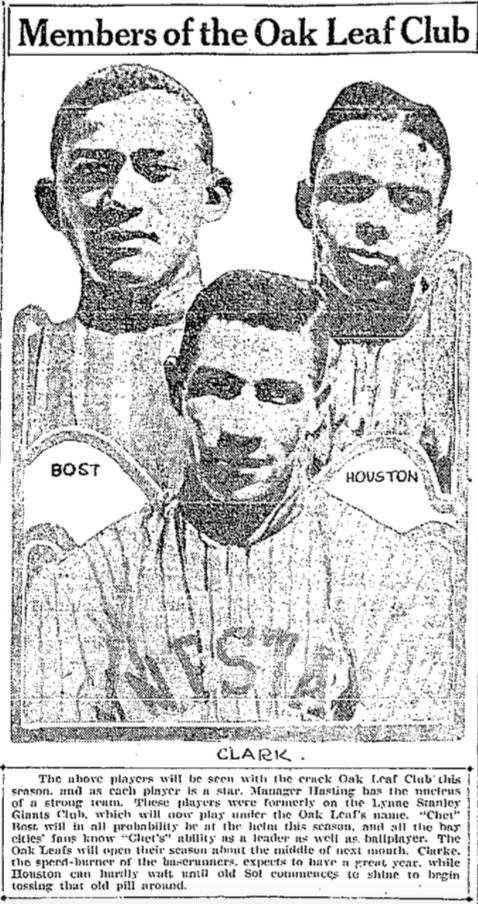
Oakland Tribune – February 13, 1916
At the age of 24, Houston was drafted into the U.S. Army during World War I, where he became a “Regimental Personnel Adjutant”.

Norman Oliver Houston – World War I Draft Registration Card
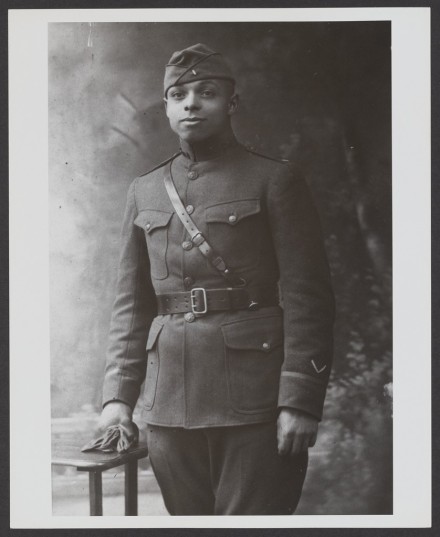
Portrait of Lt. Norman O. Houston in his World War I uniform
After the war had ended, Huston gave baseball one more shot, returning to play with so many others he had played with before, with the addition of a few new team members, like Carlisle Perry and Jimmy Claxton. At the age of 27, this would be the last baseball team that Houston would play with.
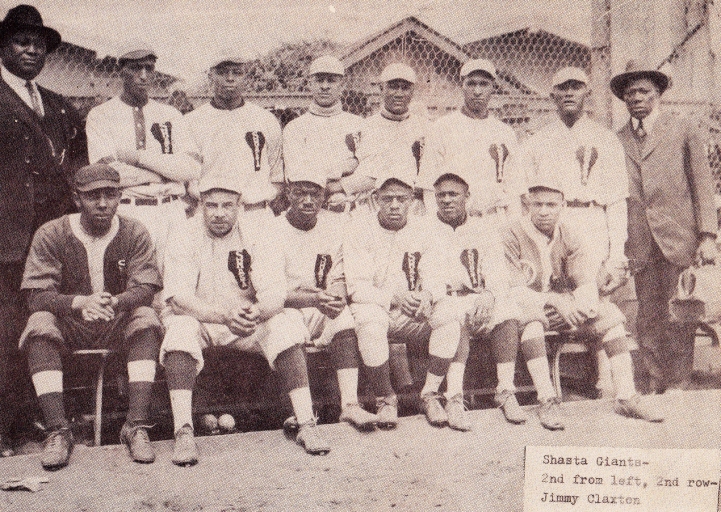
Shasta Limiteds – Left to Right Top Row: (1) Owner Tod Graham, (2) Jimmy Claxton, (3) Norman O. Houston, (4) Goldie Davis, (5) Carlisle Perry, (6) Gene Cooper, (7) Chet Bost, and the (8) Trainer Green. Left to Right Bottom Row: (8) Fisher, (9) Eddie Jackson, (10) Hilary “Bullet” Meaddows, (11) Billy Woods, (12) Brown, and (13) Vaughns.
Unlike most African American baseball players whose history fades into anonymity, this single photograph of the 1912 Oakland Giants gives us a larger picture of Norman O. Houston’s life, which may have never had been connected before now. Leaving baseball to younger men, Houston pursued on the journey of creating the largest African American owned and operated insurance brokerage in the western United States, along with his partners, William Nickerson Jr. and George A. Beavers Jr. His experience as a clerk for the Board of Fire Underwriters before serving during World War I, led him to leave the Bay Area and head to the boom town called “1920’s Los Angeles“.
“By 1920, 15,579 African Americans lived in Los Angeles. Twenty years later the City of Angeles had a Black population of 63,774, more than Denver, Oakland, San Francisco, and Seattle combined.“[1]
“Black Los Angeles” was a gold mine of opportunity for the young Houston.
The Golden State Mutual Life Insurance Company, once the largest black-owned insurance company in the western United States, represented more to policy holders than a mere insurance company. They provided African Americans with life insurance, retirement plans, savings bonds, annuities and mortgages when white-owned banks would not lend to them. In part, they are responsible for the expansion of African American growth in the West, based on their ability to both lend and insure African American owned businesses and properties.
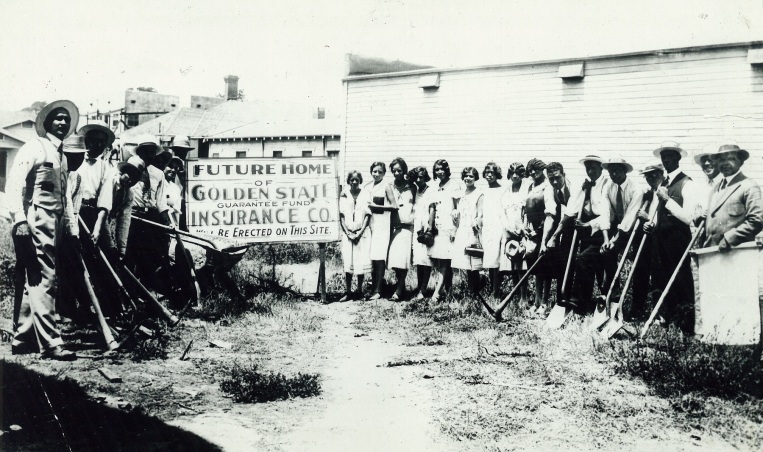
Golden State Mutual Life Insurance Company – UCLA Library – 1925
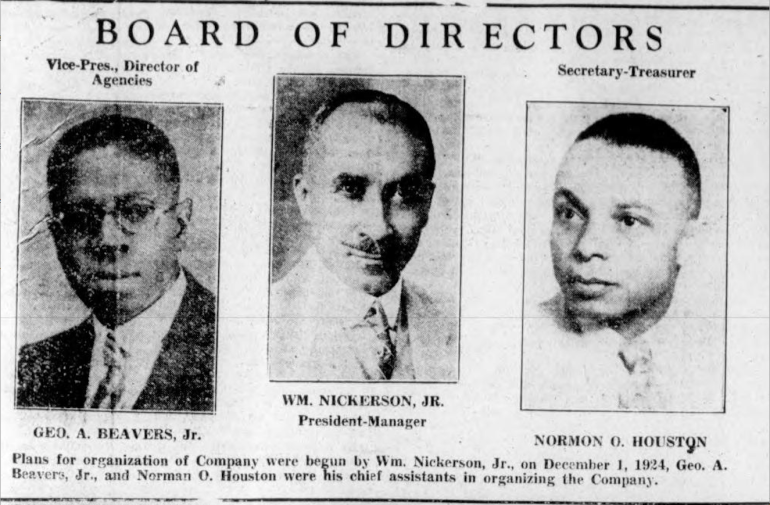
California Eagle – 1925
From its earliest beginnings, the founders of Golden State Mutual and their executives, documented the Company’s history and African Americans in California making history, using every form of known media, — including photography, recorded sound, moving images and films, and an array of artwork. At one time, Golden State Mutual maintained one of most extensive and comprehensive African American artwork collections in the United States, which was eventually sold off in 2007, just prior to the Great Recession of 2008, and near the close of its final days in 2009, — after an eighty-four year run, focusing on the African American community.

Norman O. Houston with Rev. Ralph Abernathy (UCLA, Library Special Collections, Charles E. Young Research Library)
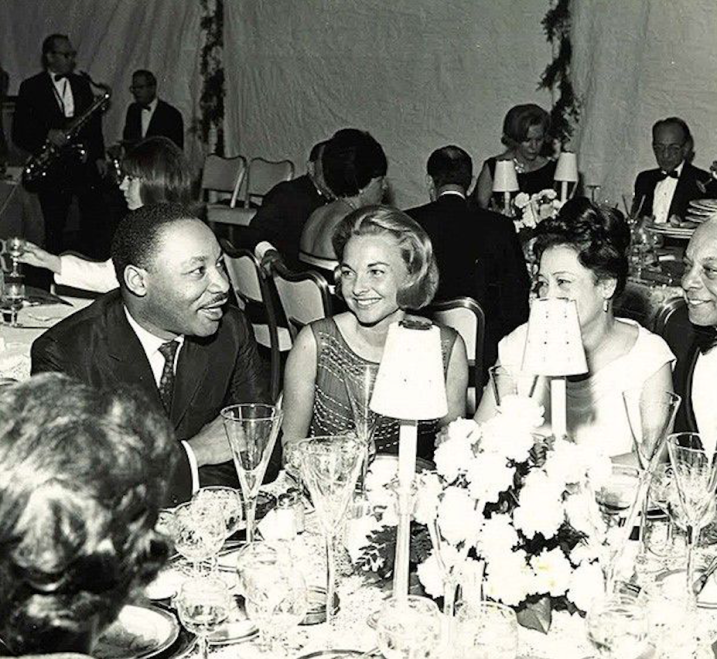
Norman O. Houston with Martin Luther King Jr. (UCLA, Library Special Collections, Charles E. Young Research Library)

Norman O. Houston with Tom Bradley and Jesse Jackson (UCLA, Library Special Collections, Charles E. Young Research Library)
 Congressman Andrew Young and Norman O. Houston (UCLA, Library Special Collections, Charles E. Young Research Library)
Congressman Andrew Young and Norman O. Houston (UCLA, Library Special Collections, Charles E. Young Research Library)

Jesse Owens visits the Home Office of the Golden State Mutual – June 18 1935 (UCLA, Library Special Collections, Charles E. Young Research Library)

Norman O. Houston and Joe Louis – 1945 (UCLA, Library Special Collections, Charles E. Young Research Library)

Lena Horne visits the Home Office of the Golden State Mutual – 1953 (UCLA, Library Special Collections, Charles E. Young Research Library)

The amount of people connected to Norman O. Houston is so vast that all of them cannot be covered here. The same can said for his partners, William Nickerson Jr. and George A. Beavers Jr.

Norman O. Houston Park Dedication – (UCLA, Library Special Collections, Charles E. Young Research Library)
“We owe a debt of gratitude to those men who founded that company in the 1920s,” said Fergerson, who grew up in Watts. Golden State Mutual “was not only an insurance company. It was a social, political and historic institution that brought jobs and proper insurance to the black community.” [2]

Neatly nestled on the edge of Baldwin Hills, is the Norman O. Houston Park, near Ladera Heights. The majority of people who gather there daily probably have no idea who Norman O. Huston was, or that he had a deep, endearing love of baseball; or that he was a native of Oakland, California. Houston rarely talked about his life and times in the world of baseball, or who he played with or against. Quiet, reserved and honorable, Norman O. Houston’s legacy of baseball lived on in every youth baseball team that the Golden State Mutual Life Insurance Company sponsored throughout its existence.
Personal Portrait of Norman O. Houston – KABC Radio 79 – April 30 1966
1) “On June 1, 1900, the first census of the 20th Century counted 2,131 Black Angelenos”, California African American Museum Staff writer, June 1, 2019
2) Lifsher, Marc: “California regulators seize struggling insurer Golden State Mutual Life“, Los Angeles Times, Oct. 1, 2009
